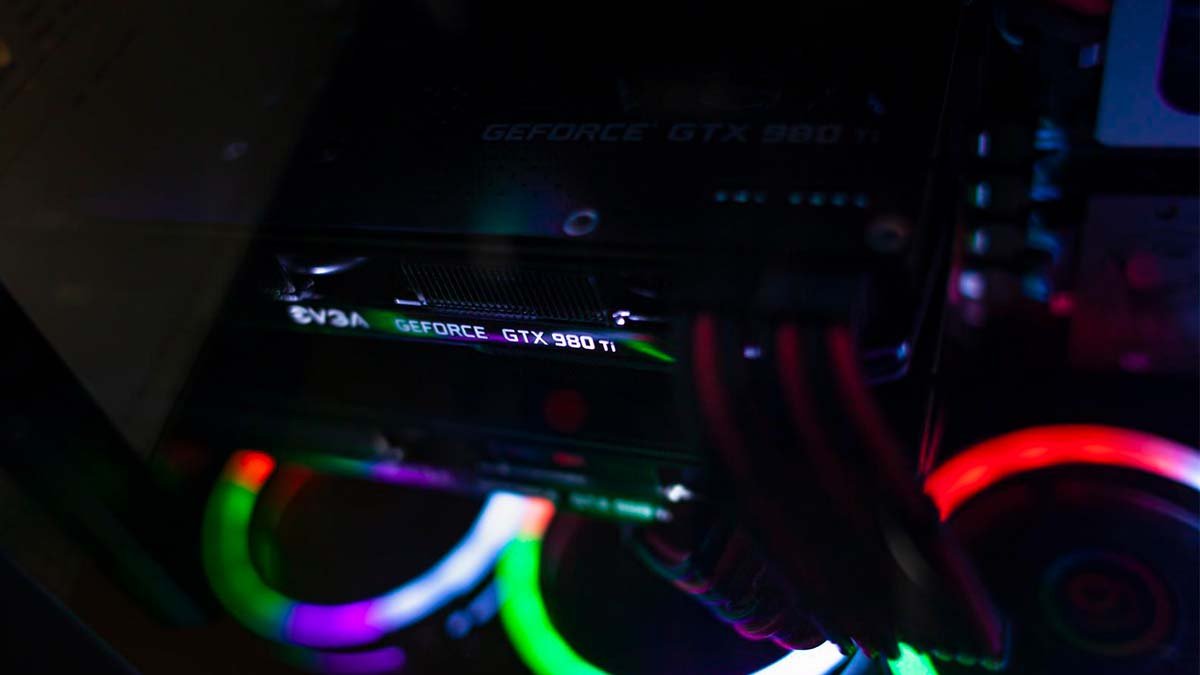The GPU black screen can be the result of various issues with different difficulty levels.so it’s time to find out how to fix GPU black screen. If the GPU of your PC or laptop is disabled, your screen will instantly go black. There are many reasons behind this issue, so we are going to tell you about this issue and also the easy process to fix this problem.
Here are some fixes for this black screen issue:
1. Check the Internal Connections Are Dust-Free
Sometimes the issue may not be so big, and you can easily resolve this with just a deep clean. Dust, debris, stubbing dirt, and oil stains from your skin can prevent any component from getting electrical signals. Then you need to check if the internet connection is dirty or dust free. So, you have to open the case of your computer and clean all the components. However, you must be careful, when cleaning sensitive components to avoid any damage. You can easily clean every corner of your PC with the help of compressed air.
2. Check the GPU Slot
A faulty GPU slot is also one of the main reasons that your screen goes black. As we all know that there are many different slots in the motherboard where you can put the graphics card. If any slot is damaged, then you can insert the CPU card in another one or remove the GPU slot. Here is how to do so:
- First of all, you have to remove the back cover of your case.
- Now Turn on the PC
- check the graphics card (if the fan properly working)
- If it isn’t working, that means the slot may be the culprit.
- Now turn off your PC
- open the case again
- take out the graphics card from the slot
- Find another correct slot
- insert the graphic card here
- Check if things change.
3. Reset the BIOS
If the GPU is disabled from BIOS then you need to reset it. Most motherboards have a CMOS reset switch that can disconnect the backup battery’s power to the BIOS. If your motherboard has this reset switch, then you can easily reset your CMOS and BIOS configuration. This CMOS reset switch has two or three pins. How to reset the BIOS:
- First of all, remove the plug
- Now hold the power button for some time to drain residual energy. If this switch has a third pin, then remove it and place it on the opposite outer, and press and hold it for a few seconds.
- Now, reinsert the plug back in place. The BIOS is reset.
4. Try another GPU
The bad GPU can also be the reason for the black screen. First of all, make sure the system and OS are able to handle and detect the GPU. You can use another GPU from a different system to check if it works properly. You can also connect your display directly to the onboard slot if there is an onboard graphics card. You just need to use an HDMI wire to connect the monitor to one of the display outputs available on the back of your case. If there is still a black screen then the issue is with your OS or software, and you have to get the help of a technician.
5. Check the Graphics Drivers
When we change the graphics card, then we receive a notification that the graphics card cannot be detected. In this case, you should check if the CPU drivers are installed and up to date. You can check the graphics drivers in this way:
- First of all, open the “Control Panel”.
- Now Find “Device Manager” and click on it.
- Locate the option of “Display Adapters,”
- double-click on it
- After that, the device is shown as the driver.
- Now, press the device to open a page with several tabs.
- Next, Click on “Driver” and try to find the driver version, here you can see if the driver is updated or not.
- Under “Driver Details”, you can see another option, “Update Driver.”
- Now, Click on it
- It will open another window, here you can search for the latest updates.
- Now you have to select the option of “Search automatically for updated driver software.”
- Now you just need to Follow the on-screen prompts to complete the update process.
If this method does not work, you can manually download the latest updates from the official website. The installers automatically install the latest updates in this way.
6. Change BIOS Settings
The incorrect BIOS setting is also the reason for GPU black screen issue. Basically, The BIOS is the first piece of hardware that becomes activated when you turn on the PC. It guides your PC to perform basic actions like booting, recognizing, and configuring hardware. So, if BIOS settings aren’t correct, you may face the black screen issue. You can change the BIOS settings by following these steps:
- First of all, turn on the computer.
- Now Restart it, and when you see the logo of the manufacturer on the screen, click on one of these buttons: F8, F12, F10, or Esc.
- Here the BIOS menu will appear.
- Make sure the settings are correctly selected for the number of your display.
- Look for IGPU that you need to enable if you use multiple monitors and disable it if you use one monitor.
- Now find the settings for PCI and PCI-E through Onboard, PCI, PCI-e/onboard backup, and PCI-e, depending on the manufacturer.
- Try to see one of these options at a time and check out if it resolves the issue of a black screen.
7. Update Your BIOS
When you buy a graphics card, the BIOS is outdated. Then you need to update it to resolve the black screen problem. However, keep in mind that if the computer loses power during the process, the system can’t reboot because the BIOS will be corrupted. So you can skip this process if you are not a master. Here is how to do so:
Check whether your system’s BIOS is updated or not. You check your system in different ways within windows without rebooting your system. These processes are given below:
1. Command Prompt
- Click on the search box
- Now, type “cmd.”
- “Command Prompt,” will appear
- Should on click it.
- Next, Copy and paste the following prompt in the command prompt’s box ( “which bios get smbiosbiosversion”)
- Here you can check the version number of your system’s BIOS.
2. System Information Panel
- Pressing Windows Key and R simultaneously, the system information panel will open.
- Now, Type “msinfo32” in the search box
- Click on enter
- Here, you can check the BIOS version under “BIOS upDate.”
3. Update Your Motherboard’s BIOS
- First, check its model number. (See it in the paperwork that comes with the new computer)
- After determining the BIOS model, go to the motherboard manufacturer’s website
- Find the option of the Downloads and Support page corresponding to the motherboard model.
- There will appear a new and old available BIOS versions
- Find the latest version and download it in a .zip file.
- Now see the README file that guides you to install the new BIOS, recommending the ideal BIOS-flashing tool for the hardware.
- Now you have to copy it to a USB drive and enter it after rebooting the PC.
Conclusion
That’s all you have to know about “how to fix GPU black screen”. So these are some reasons and the fixes for the black screen. You can easily resolve this issue after reading this helpful guide. We hope so this article will help you a lot!


![Read more about the article How To Disconnect TV From WiFi? [Solution 2023]](https://wuschools.com/wp-content/uploads/2022/12/Disconnect-TV-From-WiFi-2-300x169.jpg)

